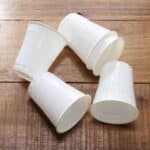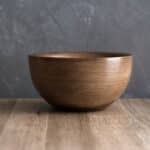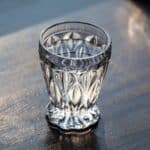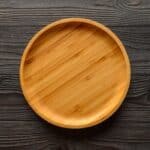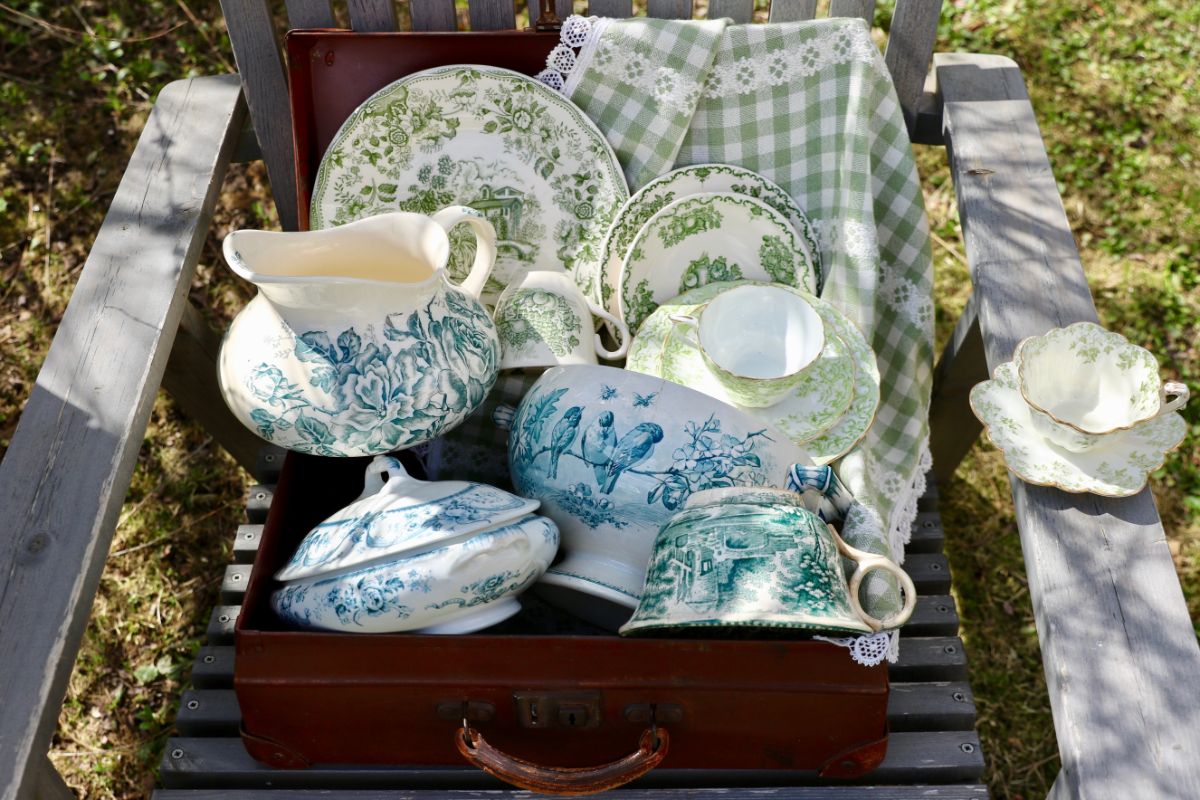
There are two types of ironstone: sedimentary rock and chinaware.
For safety, the former should never get heated in a microwave. It would be best if you didn’t microwave ironstone because the sediments in the rock react to microwave radiation. It is dangerous if there is moisture in the rock.
As for the chinaware, it is typically safe for use in microwaves except for a caveat. Let’s learn more about ironstone dishware and how to use it.
Jump to:
Is Ironstone Microwaveable?
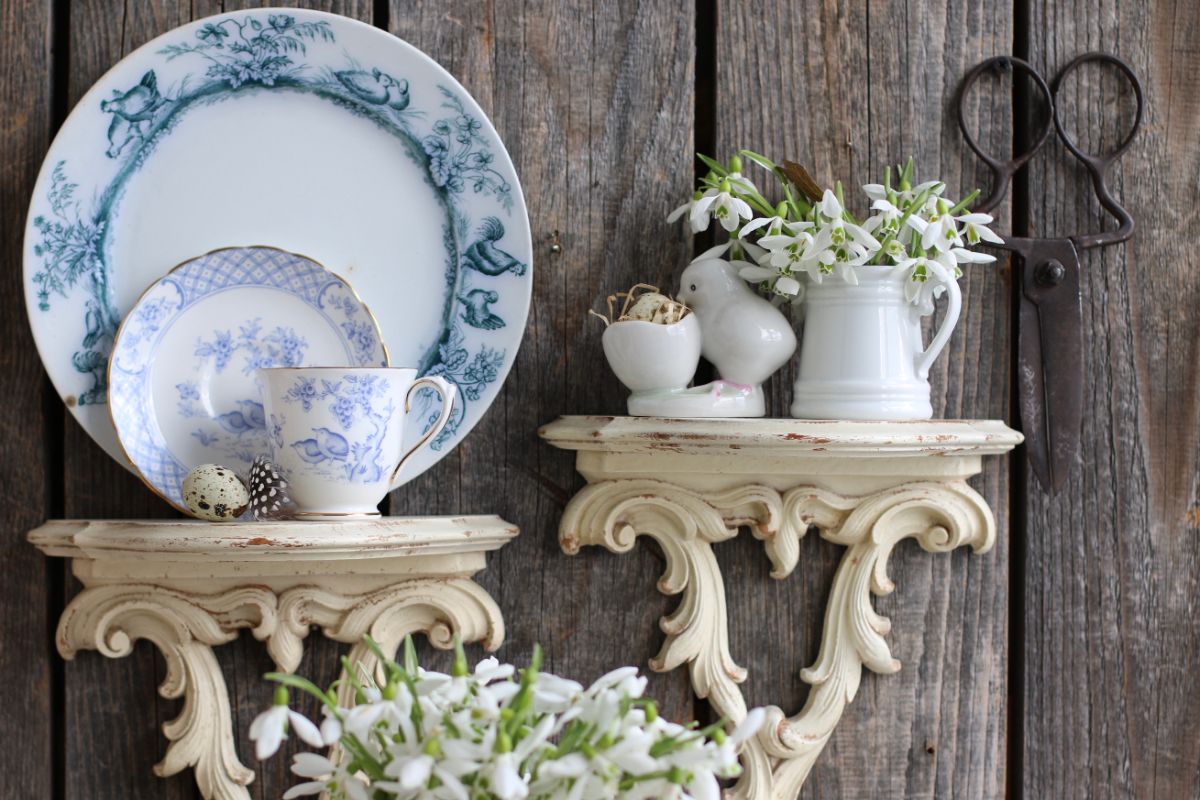
If you’ve ever wondered if Ironstone is microwavable, wonder no more. Unlike the sedimentary rock of the same name, ironstone chinaware is microwave safe with one caveat.
If your ironstone chinaware has gold or metallic trim, it cannot be in the microwave for reheating food. The reason for this is that the metal will cause electrical sparking due to the microwaves.
When microwaves interact with metal, the electrons get sloshed around the metal's surface and create a charge. The charge cause sparks, and aside from burning your food, it could cause a fire and damage your microwave oven.
With that in mind, as long as your chinaware doesn’t have metallic decorations or lining, you are likely good to go.
However, if you’re truly worried about whether your dishware is microwaveable, there is a simple test you can do to put your concerns to rest.
To ensure your dishware is microwavable, you can test it by putting it in the microwave oven with cold tap water. If the dish doesn’t get hot but the water is warm, it’s safe for the microwave.
Never use any dishware—ironstone or not—that has hairline cracks on it. Dishware with cracks is dangerous because it can break and injure you.
What Is Ironstone Chinaware?
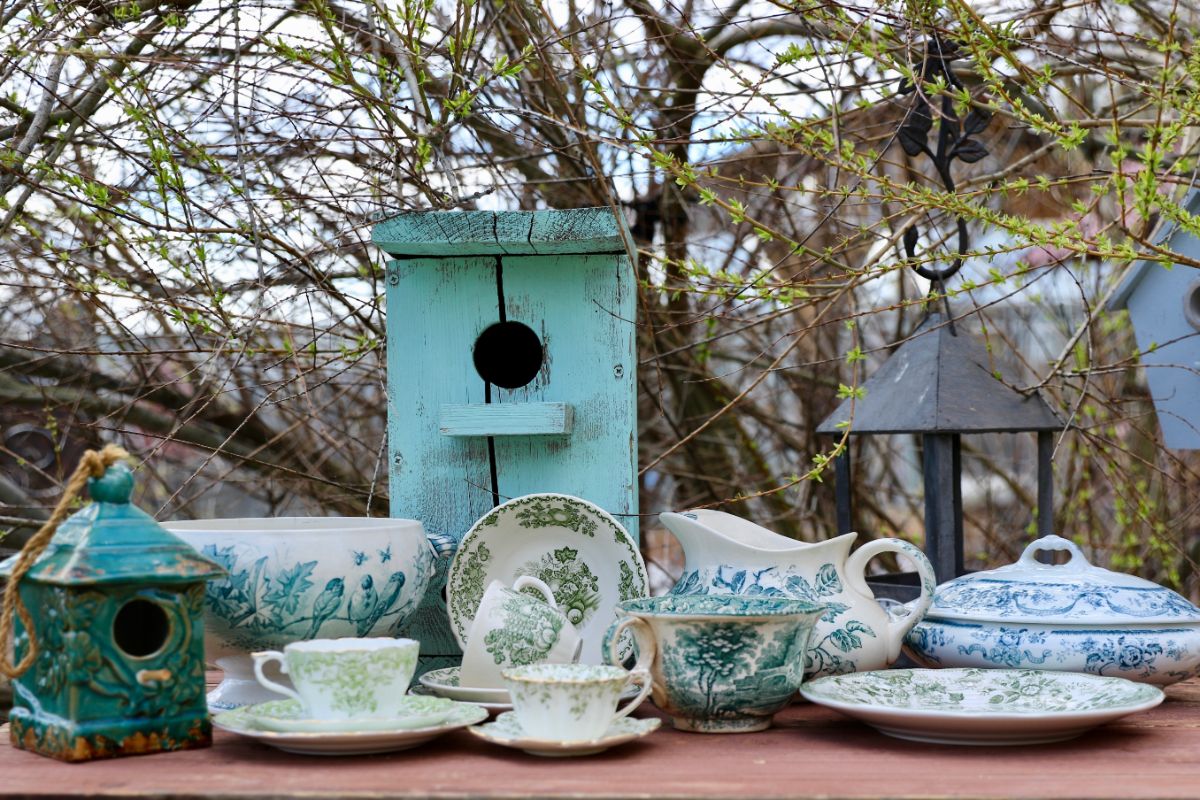
Ironstone is a type of stoneware developed at the beginning of the 19th century. Patented in 1813 by Charles James Mason, this glazed earthenware was so famous that there were over 200 makers of ironstone dishware.
The manufacturers made everything possible, from plates to covered casserole dishes. Most surprisingly, they even made chamberpots.
England, France, and the United States produced most of the Ironstone chinaware. Despite its long history, this dishware has endured continuous popularity.
You can identify ironstone dishes because they are heavier than they appear. If the ironstone dishware you have includes a handle, hold it by the handle and give it a tap with your fingernails. The dishware should make a nice ringing sound to indicate it’s not cracked.
What Is the Difference Between Ironstone, Earthenware, and Stoneware?
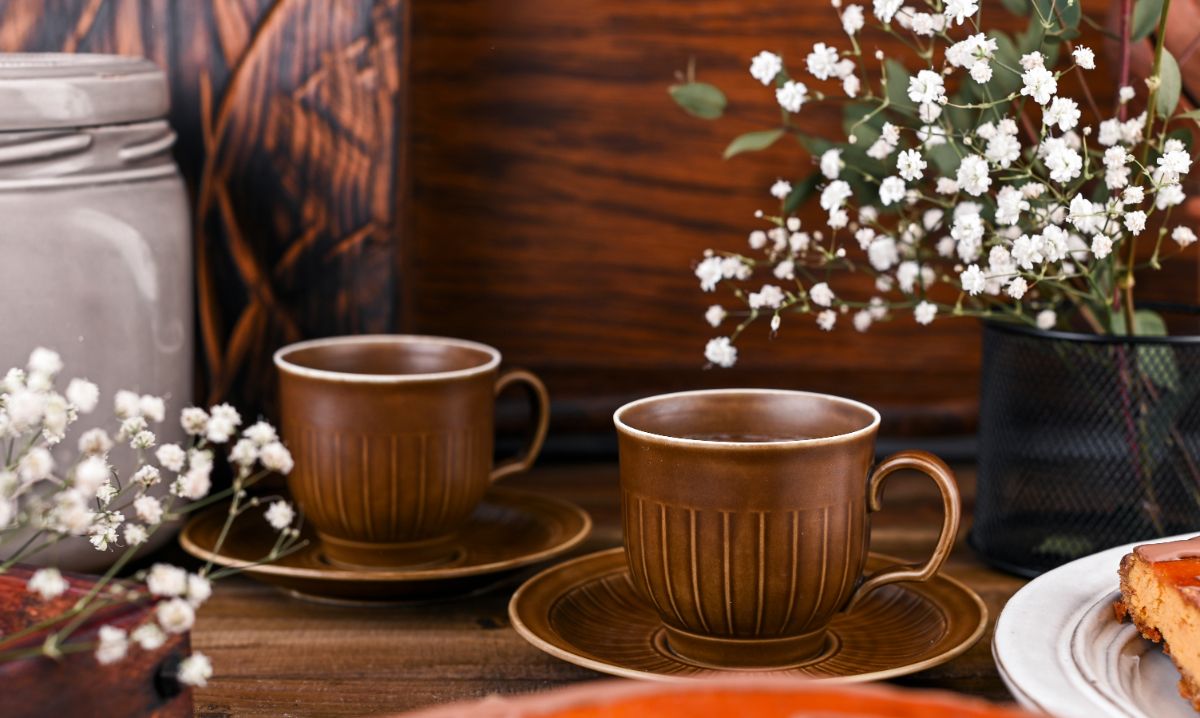
Earthenware, stoneware, and ironstone are pottery types that are similar. However, they are not the same. The uninitiated may use the terms interchangeably.
Earthenware and stoneware are made from clay of different types, whereas ironstone is a type of stoneware from the 1800s.
Ironstone
A cheaper alternative to porcelain, ironstone is easier to create and mass-produce. Early pieces featured Chinese or Japanese themes. Some ironstone went by different names, including English porcelain, stone china, new stone, and even semi-porcelain.
The glaze on ironstone is typically off-white but may also be slightly blue-tinted. Plain ironstone is highly sought after by collectors because of its high value.
While Ironstone is still quite popular, not all manufacturers mark their merchandise. So, it can be difficult to tell whether a dish is truly an antique ironstone creation.
Earthenware
Earthenware uses clay in its production and when unglazed, it is porous even after being fired in a kiln. It’s best for use with plants because it retains moisture. The moisture helps keep the plant’s soil from becoming too dry. You can use earthenware planters for your garden.
Earthenware is a type of dishware that cannot be used in the dishwasher or microwave.
Stoneware
Stoneware uses a different type of clay than earthenware. It also “cooks” at higher heats than earthenware when placed in the kiln. Once finished, it isn’t porous and makes for excellent bakeware. Stoneware dishes are typically heavy and are safe for frequent washing.
How To Care for Your Ironstone Chinaware
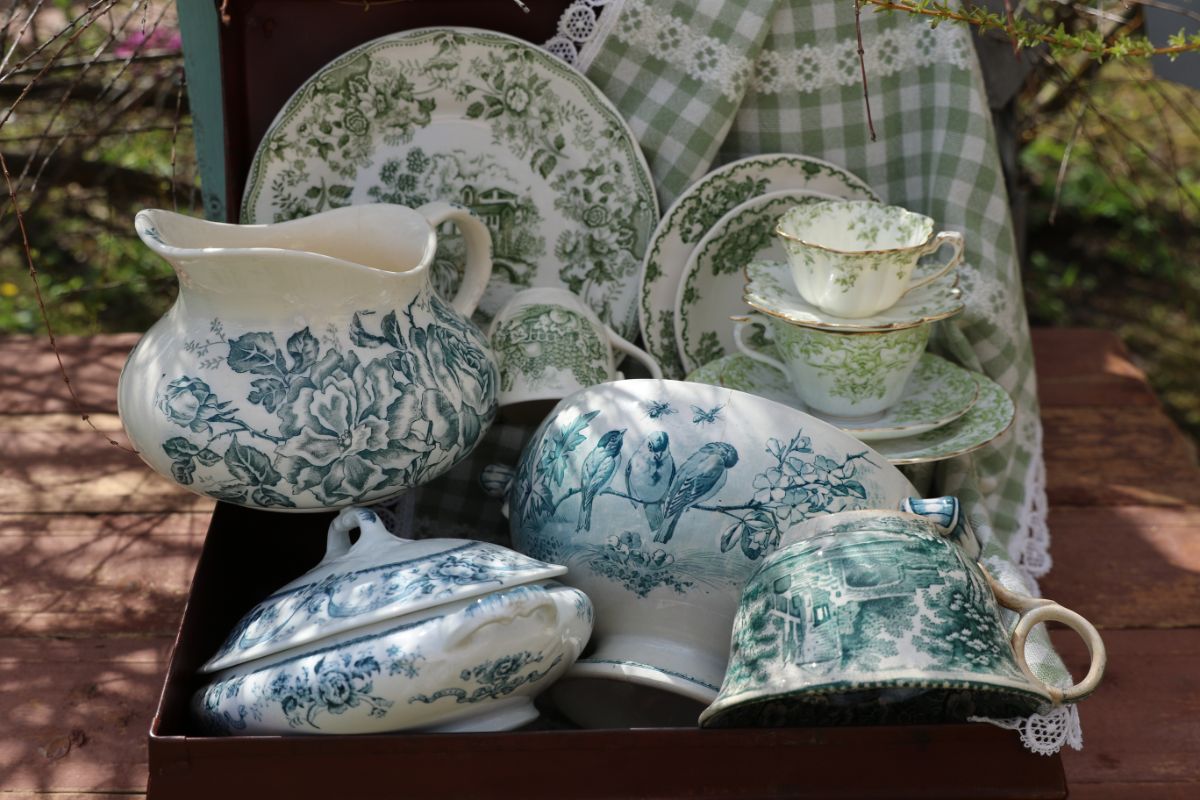
Ironstone is dishwasher safe. However, to ensure its longevity, you’ll want to hand wash it.
In particular, if you have antique ironstone, you’ll want to take extra care with cleaning them. Handwash using gentle dish soap and a soft sponge. Avoid using abrasive sponges or scrubbers because they can damage the glaze on your ironstone chinaware.
To remove stains from antique ironstone, you can use the following ingredients:
- Baking soda
- Dish soap
- Hydrogen peroxide solution
- Toothpaste
You don’t need all the ingredients, but it’ll be good to have them on hand for those “just in case” moments.
Use a soft cloth, a paste from baking soda, and tap water to buff out any stains. Baking soda is only very mildly abrasive and won’t harm your dishware.
If you don’t have baking soda on hand, you can use toothpaste instead. Should you want to, you can attempt both methods on the same day. Some toothpaste has whitening agents, which could help your cause.
Hydrogen peroxide is excellent for lifting stains. If the discoloration on your dishware is severe, you’ll want to pretreat them with hydrogen peroxide. Give the solution time to set in and lighten the stain before attempting to use baking soda or toothpaste.
Finally, please give it a good wash using dish soap. Mild dish soap is best. You don’t want to use anything too harsh that could damage your antique ironstone chinaware.
Summary
Is ironstone microwave safe? Yes, it is. You can safely microwave ironstone dishware as long as it doesn’t have metallic trim or decorations.
However, if you’re still uncertain whether what you have is authentic ironstone dishware, you can test it by microwaving it with cold tap water in it. If it overheats, you should not use it in a microwave oven in the future.
On the other hand, if you were curious about microwaving the sediment rock known as ironstone, the answer is no. It would be best if you did not microwave it for safety purposes.

